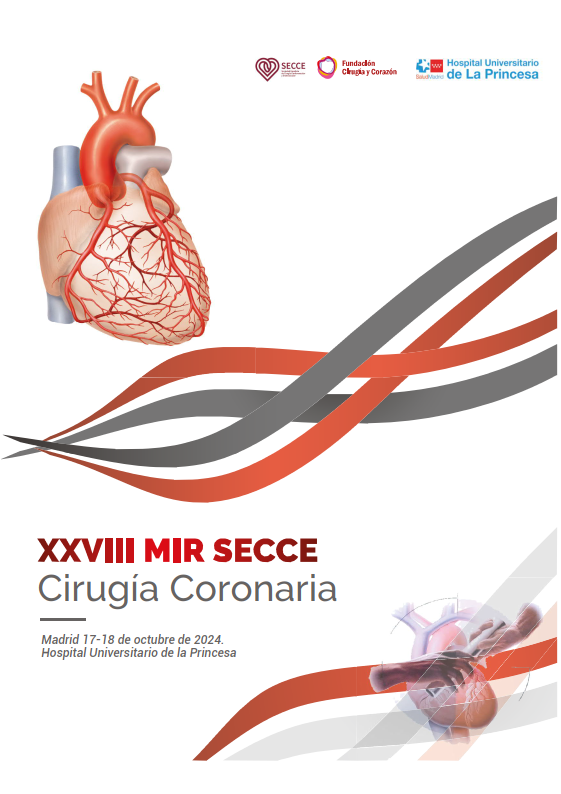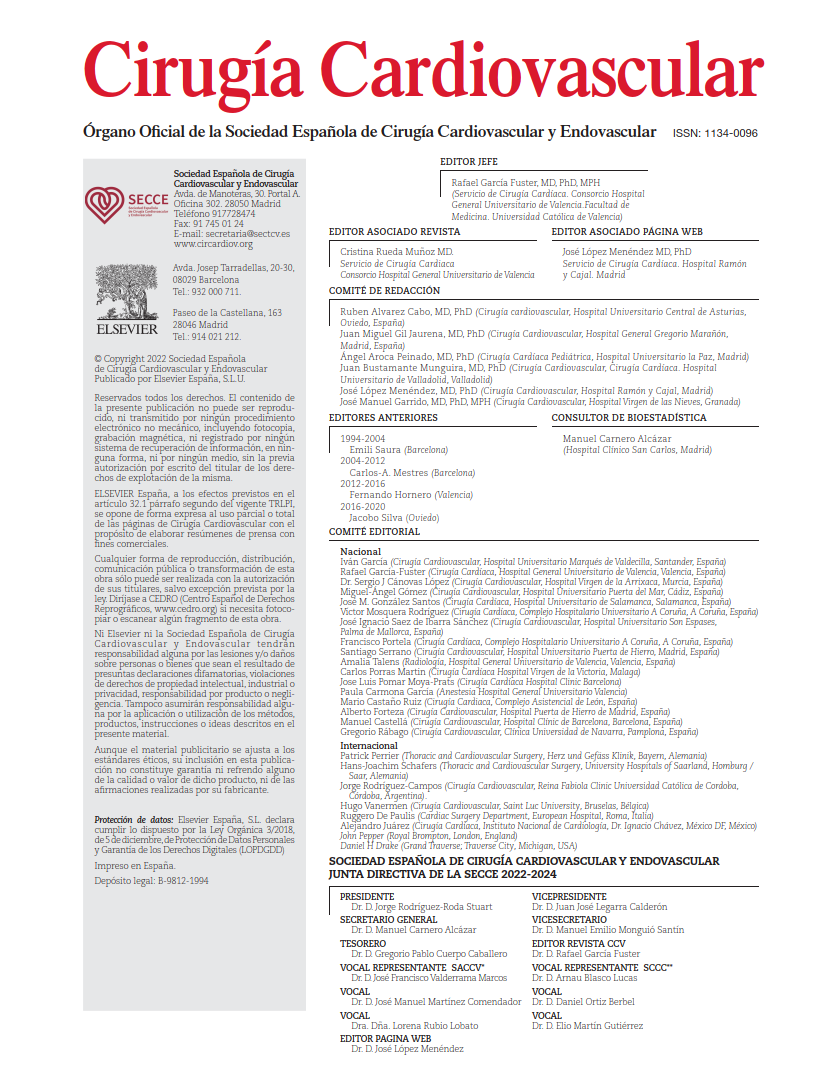Vitamin K antagonist (VKA) anticoagulation remains the standard treatment to reduce the risk of thrombotic adverse events in patients with mechanical valve prostheses. In patients receiving VKA therapy, the international normalized ratio (INR) should be individualized based on the type of valve and the patient’s risk factors for thromboembolic events. Except for the On-X® mechanical aortic prosthesis, current clinical practice guidelines recommend a therapeutic INR target not lower than 2.5 in patients with bileaflet mechanical aortic prostheses in the aortic position.
The On-X® mechanical aortic prosthesis (Artivion®), designed to minimize its thrombogenic potential, has been approved by the FDA and other regulatory bodies for use in low-risk patients with a low-dose warfarin anticoagulation strategy (INR therapeutic range 1.5-2.0) combined with low-dose aspirin (ASA), following at least 3 months of standard-dose anticoagulation (INR range 2.5-3.0) post-implantation. This recommendation emerged from the results of the randomized PROACT clinical trial, which evaluated this strategy in 375 high-risk patients with home INR monitoring.
The present study aimed to determine, first, whether low-dose warfarin combined with ASA is safe for all patients with an On-X® aortic prosthesis, regardless of their thrombotic risk or INR monitoring method. Second, it sought to assess whether the PROACT study results were reproducible in clinical practice. To this end, the authors evaluated the rates of major bleeding (MB), valve thrombosis (VT), and thromboembolism (TE) in all included patients. The primary objective was to compare the incidence of these adverse events (AEs) with those of the PROACT study control group. The secondary objective was to assess the long-term safety of the On-X® mechanical prosthesis in the aortic position.
This prospective, observational, single-arm registry clinical study evaluated the adverse event (AE) rate in patients receiving warfarin with a target INR of 1.8 (range 1.5-2.0) combined with low-dose ASA (75-100 mg/day) after isolated implantation of an On-X® aortic valve prosthesis, following at least 3 months of standard warfarin therapy (target INR 2.5; range 2.0-3.0) post-implantation. All eligible patients were included in the study, regardless of their thrombotic risk (high or low) or INR monitoring method (home or clinic). Patients were followed annually for 5 years. The primary endpoint was the composite rate of MB, VT, and TE in the overall cohort and stratified into four subgroups: home INR monitoring, clinic INR monitoring, high TE risk, and low TE risk. The historical control group consisted of PROACT study patients (both high and low TE risk) who received standard-dose warfarin (target INR 2.0-3.0) plus ASA following isolated aortic valve replacement with the On-X® prosthesis, with or without concomitant procedures, and with home INR monitoring.
This preliminary 5-year follow-up report includes data from 229 patients (981.3 patient-years) from 23 centers who completed 5 years of follow-up by August 2023. The mean age was 53.2 years, and 72.1% were male. Regarding the primary endpoint, the composite incidence of MB, VT, and TE (percentage per patient-year) was 1.83%, below the lower confidence interval (95% CI) boundary of the historical PROACT study control group (p < .0001). The 5-year event-free survival rate for the primary composite endpoint was 91.5%. Results were consistent across three of the evaluated subgroups (home INR monitoring, clinic INR monitoring, and high-risk patients). In the low-risk patient subgroup, the primary composite endpoint was 1.91%, within the 95% CI of the historical control group. A significant reduction in MB rate was observed compared to the control group (p < .0001), with similar VT, TE, and mortality rates between groups. Patients’ INR was outside the target range in 70.9% of complications when they occurred. The 5-year follow-up results support the study hypothesis that the primary composite rate of MB, VT, and TE was better (lower) than the historical PROACT study control.
These findings support the conclusion of the original PROACT study that the On-X® valve is safe and effective with an INR therapeutic range of 1.5-2.0 combined with low-dose ASA, suggesting that this outcome can be achieved with or without home INR monitoring.
COMMENTARY:
The purpose of this registry study was to assess the safety of the On-X® mechanical aortic prosthesis with low-dose anticoagulation in clinical practice. The authors aimed to validate the results initially described by the PROACT randomized clinical trial, which evaluated the safety of different anticoagulation strategies in patients with an On-X® mechanical valve prosthesis. The favorable outcomes of PROACT served as the basis for updating the 2020 ACC/AHA recommendations for anticoagulation in patients with an On-X® aortic valve prosthesis. The registry study presented here builds upon the initial steps taken by PROACT.
The difference in the primary composite outcome between the experimental arm of this study and the historical control was primarily driven by a reduction in the incidence of major bleeding, while maintaining similar thrombotic event and mortality rates.
There are several aspects that warrant additional discussion. The number of patients included was lower than that of the original PROACT study, which resulted in relatively low event occurrence in some subgroups, limiting the robustness of the findings. While this registry study suggests that low-dose anticoagulation is favorable in a more heterogeneous patient population, it is essential to remember that this strategy is currently applicable only to On-X® prostheses in the aortic position.
The risk of thrombotic events in patients undergoing valve replacement is influenced not only by patient-specific risk factors but also by prosthesis characteristics, valve position, and the INR target for anticoagulant therapy. Bileaflet mechanical prostheses (and particularly the On-X® prosthesis, due to its design) and the aortic position are associated with a lower risk of thrombotic complications. Regarding INR management, values of at least 1.5 are required to achieve effective anticoagulation in these patients. Consequently, clinical practice is evolving with this new anticoagulation strategy, but it remains essential to emphasize that its applicability is currently limited to interventions using this specific prosthesis.
Given the evidence accumulated in other studies, it would be valuable to analyze the time in therapeutic range (TTR) of patients. There is robust evidence that a lower TTR is associated with a higher risk of thrombotic complications. Home INR monitoring appears to be a promising strategy to improve adherence; however, not all patients have access to this modality, highlighting the importance of identifying strategies to enhance adherence in clinic-monitored patients as well.
The results presented in this study are encouraging. The final outcomes, once all patients have been analyzed, will provide greater robustness to these findings. The future appears promising for an anticoagulation strategy that offers greater safety without compromising efficacy.
REFERENCES:
Gerdisch MW, Hagberg RC, Perchinsky MJ, Joseph M, Oo AY, Loubani M, et al; Low-dose warfarin with a novel mechanical aortic valve: Interim registry results at 5-year follow-up. J Thorac Cardiovasc Surg. 2024 Dec;168(6):1645-1655.e6. doi: 10.1016/j.jtcvs.2024.04.017.
Puskas JD, Gerdisch M, Nichols D, Fermin L, Rhenman B, Kapoor D, et al; PROACT Investigators. Anticoagulation and Antiplatelet Strategies After On-X Mechanical Aortic Valve Replacement. J Am Coll Cardiol. 2018 Jun 19;71(24):2717-2726. doi: 10.1016/j.jacc.2018.03.535.



